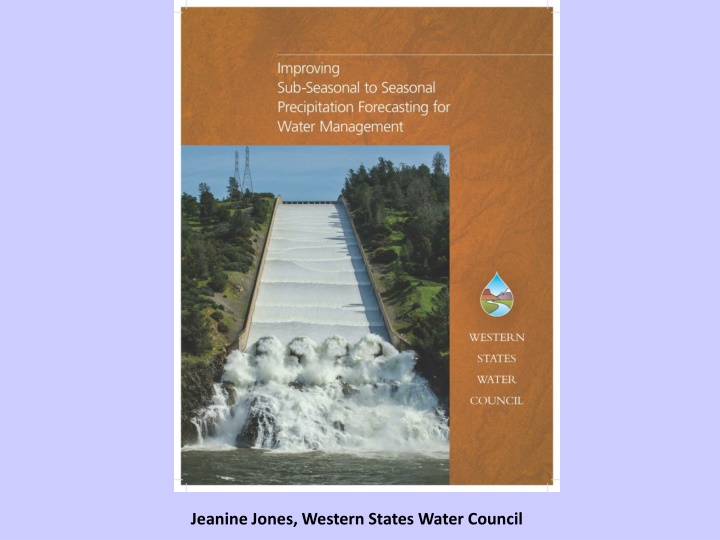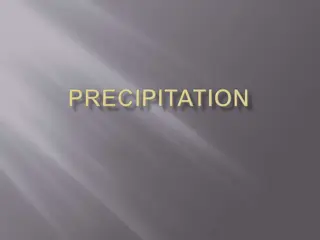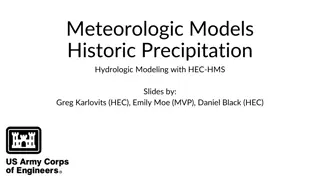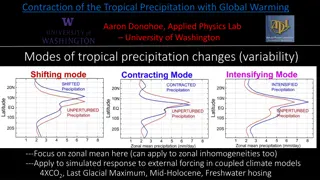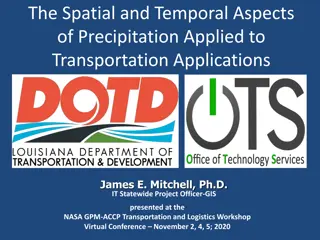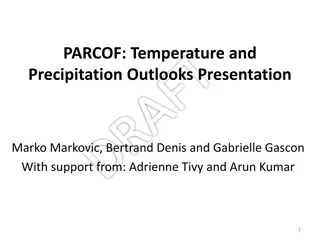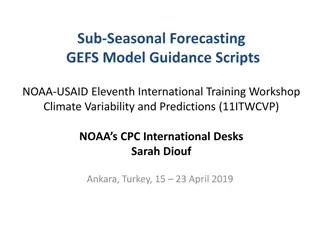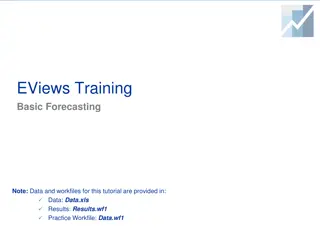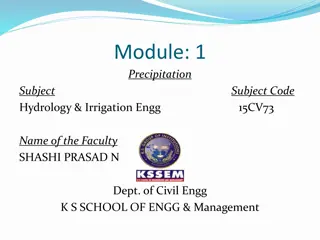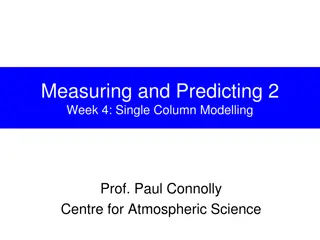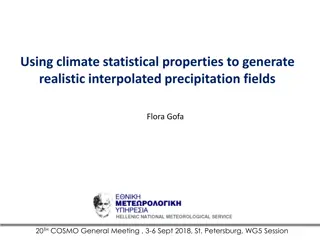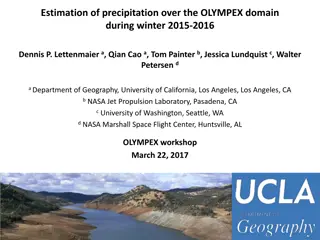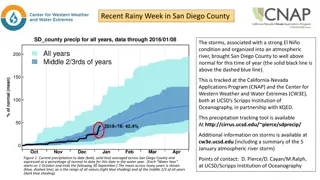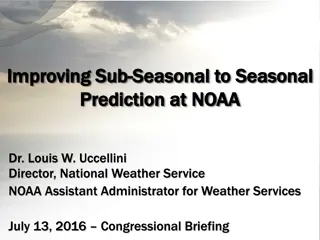Importance of Skillful Sub-Seasonal to Seasonal Precipitation Forecasting
Lack of resources directed towards improving S2S precipitation forecasting in Western water management highlights the need for action. The variability of Western precipitation underscores the importance of improved forecasting for efficient water management, emphasizing the significance of lead time in critical decision-making scenarios. Forecasting aids in balancing risks, reducing impacts of extreme events, and responding to resource competition, shaping decisions for the management of water resources.
Download Presentation

Please find below an Image/Link to download the presentation.
The content on the website is provided AS IS for your information and personal use only. It may not be sold, licensed, or shared on other websites without obtaining consent from the author.If you encounter any issues during the download, it is possible that the publisher has removed the file from their server.
You are allowed to download the files provided on this website for personal or commercial use, subject to the condition that they are used lawfully. All files are the property of their respective owners.
The content on the website is provided AS IS for your information and personal use only. It may not be sold, licensed, or shared on other websites without obtaining consent from the author.
E N D
Presentation Transcript
Why This Effort? Western States Water Council Perspective Importance of skillful sub-seasonal to seasonal precipitation forecasting for Western water management Lack of resources being directed to improving S2S precipitation forecasting Lack of resources being directed to Western precipitation forecasting needs Time is ripe for action
Variability of Western Precipitation Slide courtesy of Mike Dettinger, USGS/University of California San Diego, Scripps Std Dev of Annual Precipitation Mean Annual Precipitation Dettinger et al, 2011
Importance of Improved Forecasting for Water Management
Lead Time Very Important for Water Management Public health & safety decisions Balancing risk/cost trade-offs Increasing water management efficiency Operating within legal & regulatory frameworks Reducing impacts of extreme events Responding to increased competition for resources
Will the Rest of This Winter be Wet or Dry? Example Sub-Seasonal Decisions How much water will we be able to provide to our water users? When can we make the announcement? Will we hit hydrologic shortage triggers that require extraordinary conservation measures, or the need to negotiate contracts or adopt regulations? Is an elevated flood risk likely this spring? Should we pre-position resources? If the rest of this winter looks dry, can we use reservoir flood control space to store water for allocation to users (e.g., forecast-informed reservoir operations)? Will we have to curtail diversions on intensively used rivers? How early in the season?
Will This Winter be Wet or Dry? Example Seasonal Decisions Should we begin negotiating contracts for one-time sale of surplus wet-weather water? Can we set up a temporary groundwater banking program to take advantage of wet conditions? Do we need to seek additional drought response funding or raise water rates? Do we need to budget for enhanced water conservation activities? Should we make plans and adopt regulations for adopting a drought water bank? Should we intensify flood preparedness activities in vulnerable areas?
New understandings of role of extreme precipitation (e.g., atmospheric river storms) in West, implications for improving predictability at regional scale
Schematic illustration of regional variations in the primary weather phenomena that lead to extreme precipitation, flooding and contribute to water supply in the Western U.S. Great Plains Deep Convection (spring and summer) Atmospheric Rivers (fall and winter) Spring Front Range Upslope (rain/snow) Southwest Monsoon (summer & fall) Marty Ralph et al 11
California State Agency Investments in Observing & Researching AR Storms State share of NOAA Hydrometeorology Testbed program (HMT) in California -- $15M CalWater field observing campaigns building on the HMT project -- $5M Advanced precipitation monitoring & forecasting state grant to Bay Area local agencies -- $19M Research with Scripps/UC San Diego -- $3.5M
Summary High need for improved S2S precip forecasting for water management Scientifically challenging, but large potential payoff for water, agriculture, transportation, etc. sectors Recent National Academy of Sciences report, new regional-scale observations of extreme precipitation show pathway forward
